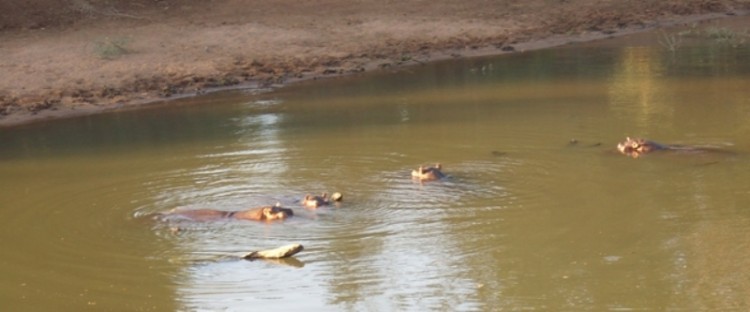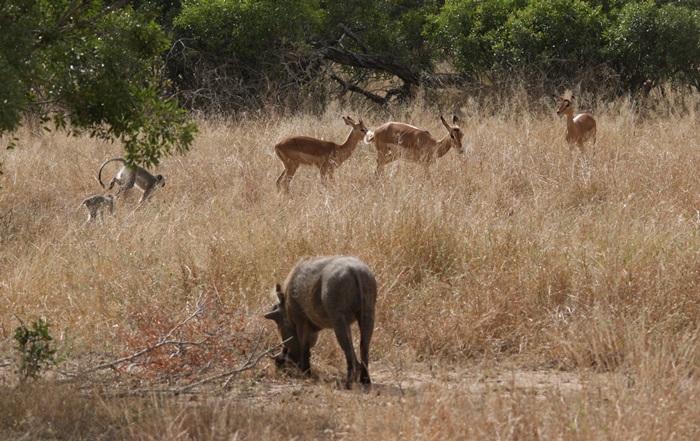Renosterpan
Kruger National Park Mammal Challenge - Battle of the Sexes
-
Klipspringer
- Global Moderator
- Posts: 5858
- Joined: Sat Sep 14, 2013 12:34 pm
- Country: Germany
- Contact:
Woodland Thicket Rat - 150 Points
Woodland Thicket Rat (Woodland Mouse) Grammomys dolichurus
Small arboreal mouse, with dull gingery-brown dorsal pelage and an extremely long tufted tail. Dorsal pelage gingery-brown or cinnamon-brown suffused with grey and black. Ventral pelage usually pure white, clearly delineated from dorsal pelage, often with thin band of pale orange between dorsal and ventral pelage. Head gingery-brown; ears short and rounded, covered with short ginger hairs. Chin and throat white. Feet white. Digit 1 of forefoot reduced to stump without claw. Hindfeet relatively short, Digit 5 long, adapted for grasping small twigs. Tail very long, scaly, with short brown or black bristles; long black hairs form terminal pencil at tip.
Woodland Thicket Rats are nocturnal and typically arboreal. They are highly agile and have various adaptations for climbing, including a long digit on the hindfoot and a long tail for balance. They build spherical nests from grasses and leaves with a single entrance up to about 4 m above the ground. They are considered communal, and several individuals or family groups have been found within the same nest.
Small arboreal mouse, with dull gingery-brown dorsal pelage and an extremely long tufted tail. Dorsal pelage gingery-brown or cinnamon-brown suffused with grey and black. Ventral pelage usually pure white, clearly delineated from dorsal pelage, often with thin band of pale orange between dorsal and ventral pelage. Head gingery-brown; ears short and rounded, covered with short ginger hairs. Chin and throat white. Feet white. Digit 1 of forefoot reduced to stump without claw. Hindfeet relatively short, Digit 5 long, adapted for grasping small twigs. Tail very long, scaly, with short brown or black bristles; long black hairs form terminal pencil at tip.
Woodland Thicket Rats are nocturnal and typically arboreal. They are highly agile and have various adaptations for climbing, including a long digit on the hindfoot and a long tail for balance. They build spherical nests from grasses and leaves with a single entrance up to about 4 m above the ground. They are considered communal, and several individuals or family groups have been found within the same nest.
-
Klipspringer
- Global Moderator
- Posts: 5858
- Joined: Sat Sep 14, 2013 12:34 pm
- Country: Germany
- Contact:
Hippo @ Luvuvhu River - 60 Points
Hippo @ Luvuvhu River
© Klipspringer
 © Richprins
© Richprins
(Elwyn Jenkins: Falling Into Place: The Story of Modern South African Place Names)The Luvuvhu river, derived from ludi (water) and mvuvhu (hippopotamus), takes its name from the hippopotamuses at the confluence of the Luvuvhu and Limpopo rivers.
© Klipspringer
- Flutterby
- Posts: 44029
- Joined: Sat May 19, 2012 12:28 pm
- Country: South Africa
- Location: Gauteng, South Africa
- Contact:
3 -in-1: Impala, Vervet Monkey & Warthog - 80 Points
3 -in-1: Impala, Vervet Monkey & Warthog
 © Flutterby
© Flutterby
H1-3
H1-3



 © Richprins
© Richprins